Aaron Ehasz’s show is a moral failure.
Over December, I watched the entirety of The Dragon Prince. All seven seasons can be binged on Netflix but I cannot recommend the series to anyone. I say this without satisfaction because I wanted to like the series.
Readers of this Substack will have seen my previous article Katara vs Rayla: Can the Domestic Virtues explain why one character is so great and the other so bad? where I dissected Rayla from The Dragon Prince and compared her to Katara from Avatar: The Last Airbender. Both shows had Aaron Ehasz as their head writer.
In that essay, I gave a one-sentence review of The Dragon Prince.
“The Dragon Prince is half-baked and infused with LGBTQ+ elements; do NOT let your children watch it.”
As a single sentence review, it is accurate. But it is too short to explain the deeper, sordid issues with The Dragon Prince.
These issues all relate to the main characters and how they are terrible role models for children.
This Essay is NOT about LGBTQ+
After reading my one-sentence review, it would be reasonable to think that I am going to criticize The Dragon Prince (TDP) for having LGBTQ+ propaganda elements.
But I am not going to do this.
To be sure, I think that TDP is immoral for promoting these things but Aaron Ehasz shocked me by committing a far greater moral sin.
Ehasz is responsible for all the main characters in TDP – Callum and Rayla, Ezran, Soren and Corvus – and they are all bad role models for children.
This is unforgivable.
The Purpose of Children’s Fiction
Readers of this Substack will know I am a children’s writer so I have given the subject of children’s media much thought and attention over the years.

This is why I watched TDP. I personally knew some young children who were watching it and I decided I should investigate, since it was a current and contemporary story.
There are many reasons that we give children books and films to enjoy. One of those reasons is to help facilitate their development from childhood to adulthood, to aid them in becoming virtuous, strong and mature men and women.
Childhood is a brief phase but adulthood is a long road that continues until the end.
Hence, one of the principle aims of a children’s story should be to help the readers grow virtue so they can hit the ground running and make the most of adulthood.
Bad writers sometimes fall into a trap of making characters in children’s stories too perfect (see my article Flannery O’Connor vs Dinosaur and consider the character of Aladar) and the consequences are always disastrous.
For children’s stories, the main characters either need to be:
a) Good people who are not perfect but still respectable. They may need to grow and develop in the story which they are a part of.
b) Bad people who become good towards the end of the story. They must have a character arc where they change for the better.
These types of characters can make good role models for children and help them understand what is right and wrong.
An example of both these types of character can be found in The Lion, the Witch and the Wardrobe by C.S Lewis. There is a strong contrast between Lucy and Edmund. Lucy is not perfect but is essentially a good person like her older siblings Peter and Susan. On the other hand, Edmund is a spiteful child even before the White Witch corrupts him with a magical sweet addiction. By the end of the story, however, Edmund has grown as a character and changed for the better.
Interestingly, both types of character exist in ATLA as well. For example, Toph is essentially a good person but she still starts out as a selfish and rude individual. She becomes much less selfish after some conflict with Katara and becomes better mannered over the show. Toph’s moral character improves.
Zuko starts out as a noble villain in ATLA but he comes to realize that his father is evil and that the right thing is to help the avatar defeat him. It is actually done masterfully and is a good example of a properly executed redemption arc.
The fact that ATLA includes both types of characters and that they are well-written, believable and likeable is made ever more remarkable when you remember that Ehasz was the head writer of that series.
Because Ehasz decided to write a fantasy series where the main characters are bad people who don’t grow and become better versions of themselves.
This isn’t necessarily a problem with stories written for adults but this is unacceptable on every conceivable level for a children’s story.
The children’s writer has a responsibility not to hurt his readers’ moral and intellectual development. Children are not stupid but they are impressionable and it is vital that the wrong ideas and habits are not imprinted on them, otherwise, their lives will be made worse and their adult years could be sabotaged.
I wish I was being melodramatic but I am not. If a bad idea is presented to a young child in a story and he internalizes it, said idea could become an unexamined foundational part of his worldview and influence his actions as he grows into a man. If the idea is false and wrong, he’ll make decisions which hurt himself and others. What is worse, is he won’t remember how he came to hold this belief uncritically and will find it hard to take action to adjust his worldview to rectify his path in life. And vice versa for girls and women.
Unexamined belief is the most dangerous kind.
Children’s writers must be mindful of the damage they can do and so they have a duty to strive towards the Good, the True and the Beautiful in their work.
Ehasz stamped, trod and spat on this critical duty while writing TDP. As we will see later in this essay, he did this deliberately because his end goal was propaganda rather than art.
I’m going to demonstrate Ehasz’s subversive writing by examining the main characters: Callum and Rayla, Ezran, Corvus and Soren in reverse order.
Starting from not so bad and finishing with outright vile.
Season Three: Soren – A young man never allowed to shine
Most of this analysis will examine the characters in seasons four to seven because that is where the problems are most egregious. However, Soren was getting the short end of the stick in the first three seasons.
Soren in the first season is shown to be brave, well-meaning, strong and a solid swordsman but also a big moron. His thick-headedness could be interpreted as a character flaw and, since characters shouldn’t be perfect, this isn’t a problem.
Now there were signs that the writers didn’t know what to do with Soren as a character even in the earlier seasons but one thing seems clear throughout the entire show…
They didn’t want him to shine.
Soren is depicted as a solid swordsman and the youngest captain of the kingdom’s royal guard, yet he never triumphs or wins a swordfight in the first three seasons.
What makes this especially noteworthy is the rivalry in season three between Soren and Kasef - the crown prince of Neolandia - which looked as if it was the setup for an epic showdown where Soren was going to prove his warrior virtues.
A full-run down of the rivalry is unnecessary, here is the most important part:
Soren’s father Viren is leading an alliance of several human armies in an invasion of the lands ruled by the elves and the Dragon Queen. The main objective is to kill the Dragon Queen. To achieve this end, Viren steals a powerful, magical artefact from the sunfire elves and corrupts it to his will.
He comes with this artefact to the joint armies and tells the soldiers that he can cast a spell on them which will make them immune to fire. The warriors are nervous about the nature of the spell and are worried. To try and allay their fears, Viren tells everyone that he will cast the spell on his son first and calls Soren forward.
But Soren’s gut tells him that this is dangerous and wicked magic so he hesitates. Kasef, seeing this hesitation, strides forwards and declares he will receive the benefits of the spell to show up Soren.
Viren smiles and turns Kasef into a mindless, violent, fire hulk. Very little is left of Kasef, he is basically a monster.
Soren decides to switch sides before the battle.
As stated earlier, I thought this was the setup for a showdown between Soren and Kasef on the battlefield. It would make thematic sense and would be a layer of extra conflict, a fight, not just between two different political factions, but between two rivals with personal grudges. I also thought this was the moment the writers were going to let Soren finally shine.
But this didn’t happen. Kasef is not killed or even met in battle by Soren but instead pierced by the arrows of a completely different character who shows up randomly on the scene with her own army.
While watching it, I thought that it was a wasted opportunity.
I realized in this episode that Soren would never be allowed to shine by the writers but what I didn’t expect was the assassination of his character.
Season Four: Soren – Total Flanderization
Flanderization is defined as “the process through which a fictional character's essential traits are oversimplified to the point where they constitute their entire personality, or at least exaggerated while other traits remain, over the course of a serial work.”
Soren undergoes such horrific flanderization that it isn’t funny. His eccentric personality and stupidity were always used for bad comic relief in the first three seasons but these aspects of his character were balanced by his other qualities.
Come season four, Soren is eccentricity and stupidity incarnate. Constantly, the butt and deliverer of terrible jokes, he is a fool. But unlike the archetypal fool who can act as a mirror to supposedly wiser men to show them their own blind-spots and unexamined foolishness, Soren is just a caricature of himself and an idiot.
He is not a court jester; actual court jesters played a useful function in the royal courts of old and were amusing rather than cringe worthy.
And it only gets worse for Soren from season four onwards; he gets dumber and dumber.
I honestly think Ehasz and the other writers didn’t know what do with Soren and decided that he should be comic relief and nothing more. As a consequence, Soren achieves and does nothing – in fact, he is basically a waste of space and screen time as he isn’t even funny past episode one of season four.
Season Three: Corvus – A positive role model backstabbed by the writers
In season three, Corvus is one of the few male characters in the show who could be described as strong, competent, powerful and skilled. He is an excellent tracker and is loyal to his king.
He is good at what he does and has an aura of weight about him. He is a respectable young man.
Over the course of watching the show, I observed that the writers were afraid of strong and powerful male characters like Corvus. Aside from Corvus, the only other male characters I could describe as strong, competent, powerful and skilled would be Viren, Karim and Aaravos…
…who are all villains.
At a stretch, one could argue that these adjectives describe King Harrow but he dies in the first season and is never seen again.
One could also suggest that the minor character of Captain Villads could be described as strong, competent, powerful and skilled in his field of sailing with his vessel the Ruthless. However, he appears in only two seasons (one and five) and the writers felt it necessary to knock him down a peg as it is revealed in season five that he loses his ship to a female skywing elf called Nyx in a gambling game.
He is still the captain of the Ruthless but Nyx is his superior and tells him what to do.
I can only imagine that Ehasz and the writers felt the unconscious urge to kick Corvus down much like Soren and Captain Villads.
Naturally, they obliged their urges.
Season Four and Beyond: Corvus and Soren – A (bad) Comedic Duo
With his tracking and fighting skills, and steadfast personality to boot, Corvus could have easily upstaged the real main characters: Ezran, Callum and Rayla.
So the writers gave him a job – babysitting Soren who they recently hit with the dumb stick.
In this capacity, Corvus is simply the straight man for Soren’s tomfoolery. Corvus acts as the sensible one in the room who rolls his eyes when Soren says or does something dumb, which he does every minute he is on screen.
For the rest of the series, Corvus doesn’t have the chance to be heroic or put any of his skills to good use. I get the sense the writers didn’t know what do with him either and just grouped him with the other character they had no use for.
Both characters become the comic relief duo in a show marred by bad comedy and thus don’t serve as good role models because their qualities are only used for the butt of jokes and for the purposes of buffoonery.
What is sad is that both characters in the earlier seasons were admirable on some levels but they are jokes and nonentities from season four onward.
Ezran – The boy king who never grew up
But it can be argued that Soren and Corvus are not the main characters. Even though they spend a lot of time on screen both separately and together, they are not the principle leads and so we shouldn’t pay them much attention.
Children won’t be looking to Soren and Corvus as role models, it can be argued, because the real main characters are Ezran, Callum and Rayla.
Sadly, the situation does not get much better when we look at the real main characters like Ezran.
In the first three seasons, Ezran is a sensitive and emphatic yet naive young boy. Even though he is a bit of a wet fish, this is only to be expected considering his age. He is young and the adventure should help him grow.
Now, I was expecting or, rather hoping, that he would have grown as a character in the fourth season because there is a time gap of two years. However, he is the same person, just taller and with a man bun.
He seems no wiser, no stronger and no more mature than when he first appeared in season one. Despite being the king of Katolis by this time in the show, he has no kingly character qualities and doesn’t take the role seriously.
Ezran’s place as king is with his people who need him for the stability and governance of the kingdom, but he ditches his duties and nation many times over to go on adventures with Callum, Rayla and Soren.
Whenever he does stay at home where he is needed, Ezran prefers to focus on important matters such as promoting the jelly-tart baker to be a member of the high council, inviting the Dragon Queen to stand on the graves of men who died fighting hostile dragons and playing games with Zym the Dragon Prince, in short, doing anything that is the opposite of serious and wise governance.
This *may* be realistic but it is a missed opportunity.
Ehasz and the other writers could have used Ezran’s ascent into kinghood as a metaphor or analogy for growing up. The audience could watch as Ezran faces challenges and becomes stronger as a result of overcoming them and grows into a young man and leaves boyhood behind him.
This could have been a genius way of following a boy’s path of growth from childhood to manhood.
But instead, Ezran faces no conflict in his role as king. He faces adversity on the adventures with his half-brother and their friends but not in his role as a king; he is not required to grow and become worthy of the crown.
Ezran remains a static character who, despite being twelve years old in seasons four to seven, is apparently a fully-realized and self-actualized person. If you compare ten-year-old Ezran from the first three seasons to twelve-year-old Ezran in the last four, you will see he is the same person.
The message given to children is that it is fine to remain as you are and not change even if you are thrown into a world where you have to be responsible, wield power and where people expect – no, need – you to be stronger and wiser than you were yesterday.
Inadvertently as well, Ezran sends the message that growing up and changing is bad and that remaining your childlike self is good. But this is a lie, change and growth are good things – adulthood is not something to be feared and children need to be reminded of this.
Because of these two messages, Ezran is not a good role model because he portrays growing up as unnecessary, even when you have to accept greater responsibilities and power.
Callum and Rayla – The most toxic relationship you will ever see in a children’s show
So far, the discussed character issues with Soren, Corvus and Ezran are bad but not utterly egregious. The characters are awful but not unforgivable.
But Callum and Rayla are unforgivable.
In the first three seasons, these two characters have some flaws and vices.
Callum can generally be described as physically weak, socially awkward, lacking in confidence, lacking in any gravitas, being a bit of a pushover etc. in the first three seasons.
Rayla can generally be described as harsh-tongued, naggy, self-righteous, treacherous, mean, rude, uncompassionate, disloyal etc. in the first three seasons.
But again, it is okay to have flawed main characters in children’s media as long as these flaws are addressed and said characters grow and become better versions of themselves.
Here, Ehasz continues his trend of dropping the ball in the show because Callum doesn’t change and neither does Rayla. The only things that change are their outfits and hairstyles.
This is bad enough because this is the exact same problem we see with Ezran. Characters who do not surpass their flaws and grow as people are not good role models for children.
But it gets worse.
In the beginning of season three, Callum and Rayla become a couple. Most shows have their lovebirds get together at the end of the story (see ATLA with Aang and Katara for example) because it is easier to write the falling in love and will-they-won’t-they subplots than it is to write subplots for an established romantic relationship.

Long have I considered it a shame that mainstream fiction shies away from depicting healthy romantic relationships where both partners are committed and in it for the long haul. The closest I have seen is the marriage between Loid and Yor in Spy X Family but that marriage is a sham and a cover for both parties – not a loving relationship in actuality.
Family breakdown in many western countries is a serious and widespread problem. Some children have literally never seen a healthy, romantic relationship in the flesh because their parents could not resolve their problems and divorced.
Depicting a healthy romance beyond the point of initial attraction would be a great moral service for both children and adults in our broken society. Of course, it would have to be done well and there are many traps which could ensnare even a good writer.
Yet I thought that Ehasz was going to be bold here, because why else would he let Callum and Rayla get together so early? The only other possibility in my mind was that the pair would break up before the events of season four for the purposes of reverting back to will-they-won’t-they romantic subplot shenanigans.
I could never have predicted what actually happened.
In season four episode one, the other characters throw a surprise birthday party for Callum. Later during the celebration, Callum decides to sit outside away from the fun and acts despondent.
Ezran asks him what is wrong. And Callum says he doesn’t like his birthday because “[…] to me, this will always be the anniversary of the day she left” referring to Rayla.
Later in the same episode, Callum is alone in his archmage study (because he is the archmage now) and Rayla sneaks in through the window and says “Hey”.
In episode two, the beans are spilled.
They didn’t break up, Rayla wasn’t sucked into a magical portal against her will, or forced to leave because of some duty or call to action which she couldn’t ignore.
Instead, she left Callum on the morning of his birthday two years before, to hunt for Viren who she suspected was not actually dead. Nothing was forcing her to do any of this, she just decided to go and in that manner.
But it still gets worse.
A self-respecting boy or man would get angry and shout at Rayla for ditching him for two years without any contact or explanation. A man who believes himself worthy of love and respect, especially from a lover, would not tolerate such treatment and would probably say: “You should have stayed out of my life forever. I don’t want to see you ever again. Get out of my sight!”
But Callum’s reaction is insipid and completely without backbone, feeling and self-respect.
He tells her that he doesn’t want to talk about it and acts distant. He doesn’t demand an apology or tell her to leave the room so he can process his conflicting thoughts and feelings.
Callum acts like a boy without self-respect, like a docile doormat or an emotionally-manipulated child or someone who has developed a horrid case of learned helplessness.
This is not the behaviour of a young man who is strong, self-assured, knows his worth and knows he deserves to be treated with respect, dignity and love. This is the response of a young man who doesn’t even know how to feel indignation or anger when he is the one who has been hurt – he doesn’t have the balls to be upset.
Callum is toxically attached to Rayla and obviously believes he doesn’t deserve better. Rayla is a pair of boots and Callum is a doormat – that is the relationship dynamic in this series.
I don’t know about you, but I don’t want young boys believing that Callum’s response is healthy or well-adjusted. I don’t want the idea imprinted on young boys that they should accept this kind of treatment from anyone, especially not girls who claim to love them.
But apparently, this is what Ehasz wants to impress on young boys. He wants them to believe this is okay.

But it still gets worse.
The problem is not that Rayla doesn’t get on her hands and knees anywhere in the show with tears in her eyes and say to Callum: “I am so sorry. I shouldn’t have left you. I was selfish, cruel and stupid. I should never have left. I hurt you so much and it is all my fault and I am the only one to blame. I was never worthy of your love. I am so sorry. Please forgive me.” No, the problem is Rayla doesn’t apologize.
At all. Ever.
She doesn’t even do the apologetic equivalent of: “My bad! But why don’t we let bygones are bygones?”
Rayla literally never apologizes to Callum. The most she says is “I know my leaving hurt you.”
I don’t want young girls to think that it is acceptable to treat a boyfriend like this and not apologize. And I am sure you, dear reader, don’t think that girls should treat their boyfriends like this and then not apologize.
But apparently Aaron Ehasz wants girls to believe this is acceptable behaviour.
But again, somehow, it still gets worse.
One would think that Callum and Rayla would not get back together after this, or if they did, it would only be after having a serious discussion about Rayla’s abandonment in order to move past it.
But if you thought Ehasz and his fellow showrunners cared about accurately depicting the effects of abandonment or emotional neglect and abuse in a relationship, you would be dead wrong.
Because the writers give themselves permission in episode three to play hackneyed will-they-won’t-they tropes that were seen before in season two. The writers do this without taking into account that this is no longer cute or believable.
No intimacy or attraction should be possible between these two without both characters working through the pain and trust issues which would have resulted from Rayla’s cruel decision.
This is even supposing intimacy and trust would ever be possible again between the pair after everything that has happened.
The “Lessons” of Callum and Rayla’s “Romance”
Unless you are a rabid TDP fan, the summary of the above relationship will have filled you with concern.
And I have not misrepresented it, if you want to see this for yourself, you can watch this video which was put together by a fan of the series.
And I want to be clear that it doesn’t matter which season you watch after season four, the relationship is still toxic. The relationship is not used as a warning about which relationships you should avoid, or used as a device for character growth, or used to explore how two people can rebuild love and trust after splitting up - they just get back together towards the end of season six without addressing the titanic elephants in the room which is their relationship.
It is depicted as a little bump on the road of the love. Callum doesn’t express his real feelings but instead bottles them up and just carries on as normal, and Rayla never apologizes. A toxic relationship is presented as if it were healthy.
Callum and Rayla’s relationship would be bad enough in an adult series but it is simply unforgivable in a show aimed at impressionable, young children.
The relationship gives terrible “moral lessons” and sets an even worse model for what a relationship should look like. Boys and girls are shown a dysfunctional relationship marked by pain and broken trust and told that this is good – ideal even.
Girls are told that they can treat their boyfriends like dirt and that they never need to apologize.
Boys are told that, when they are mistreated and abused by girls, they should take it meekly and remain committed in the relationship, rather than leave.
Does anyone want their children believing the above?
This relationship is a pernicious model for children and Ehasz is actively being a vile, subversive writer by promoting it. Callum and Rayla are awful role models who encourage weak and selfish behaviours respectively.
Their appalling actions are never called out for what they are and neither character improves or walks toward virtue as a result of their suffering and mistakes.
Ehasz wrote this relationship to be toxic… deliberately.
It was no accident. You don’t accidentally write toxic relationship dynamics at this level with such impressive, prior writing experience.
Proof of this can be found in ATLA (where, again, Ehasz was the head writer), there are two relationships in the series: Sokka x Suki, and Zuko x Mai. Sokka and Suki’s relationship is basically plain sailing and Zuko and Mai’s relationship has its rocky moments but it is ultimately wholesome.
Neither of these relationships are toxic in ATLA.
Ehasz knows what healthy relationships can look like in fiction but he chose to make Callum and Rayla’s relationship toxic in a show for children.
This speaks volumes about Ehasz’s character.
Aaron Ehasz’s Ideological Malice
Ehasz’s writing decisions do not make sense unless you take into account the ideology driving him and then it all becomes clear.
The reason that Ehasz’s male characters are undermined to the point of weakness in TDP is because he is a progressive feminist. His ideology requires him to treat boys and men as dangerous threats if they lean into their power but it also requires him to empower female characters.
We can discern this is his ideology because, while the male characters are as I describe them in the previous sections, the female characters are the opposite.
Soren’s a clown, Corvus’ a long-suffering babysitter, Ezran’s a perpetual child and ineffective ruler, and Callum’s a doormat for a neglectful girlfriend, but all the female characters in the series are strong, competent, powerful and skilled.
Rayla, Amaya and Janai, who are not perfect by any means and don’t always make the right decisions, are strong in body and mind, competent at what they do, and powerful and skilful in their chosen domains.
These three women are better at fighting than all the men combined in the show (especially if we exclude Corvus from these maths), they may have vulnerabilities but they are not weak, they may make jokes but they are not jokes themselves.
Even the lesbian relationship between Amaya and Janai has much, much, much more love, tenderness and mutual respect than the heterosexual relationship between Callum and Rayla.
The show puts its men down to raise its women up. Feminist creators can never truly square the circle of depicting a world led by strong women without denigrating men and putting them in a lower place.
Ehasz is no exception; he cannot figure out how to lift women up without taking away power and dignity from men.
I can only describe such an ideology as malicious.
The Ideological Rationale: Men Bad. Women Good.
As mentioned earlier, all the male characters we could describe as strong, powerful, competent and skilled in the show are villains: Viren, Karim and Aaravos etc.
The implication in TDP is that if men become strong, powerful, competent and skilled, they will become evil and dangerous to those around them.
But is this even remotely true?
Last year, I wrote an article on power in my exploration of Power Fantasies and defined power as the following:
Power is the freedom and ability to live as you please; to effect change in your environment according to your wants and to persuade, coerce and/or command others to do what you desire. As well as the capacity to resist the imposition of others upon you.
People who have power, especially people who have more than you, have the ability to make your life a living hell if they so desire. Conversely, the same people can make your life better in every conceivable way.
The difference between a good king and an evil tyrant is not found in power but in virtue. A virtuous ruler will be a good king and living in his kingdom will be a pleasure but a ruler enslaved to vice will be a despot and you will despise living under his power.
For this reason, you should be happy when good men get power and worried when bad men get power.
Ehasz is being a good writer when he makes the villains strong, competent etc. because you have to be these things to acquire power. And you need power to be a dangerous villain in a story.
But Ehasz is wrong about what makes a man a villain and this ruins his writing.
We can recognize that vice, bad intentions, selfishness and a life orientated toward the Bad, False and Ugly are what makes one a villain. But, judging by how the TDP treats its male characters, Ehasz subscribes to the typical feminist answer to this question of evil:
Testosterone!
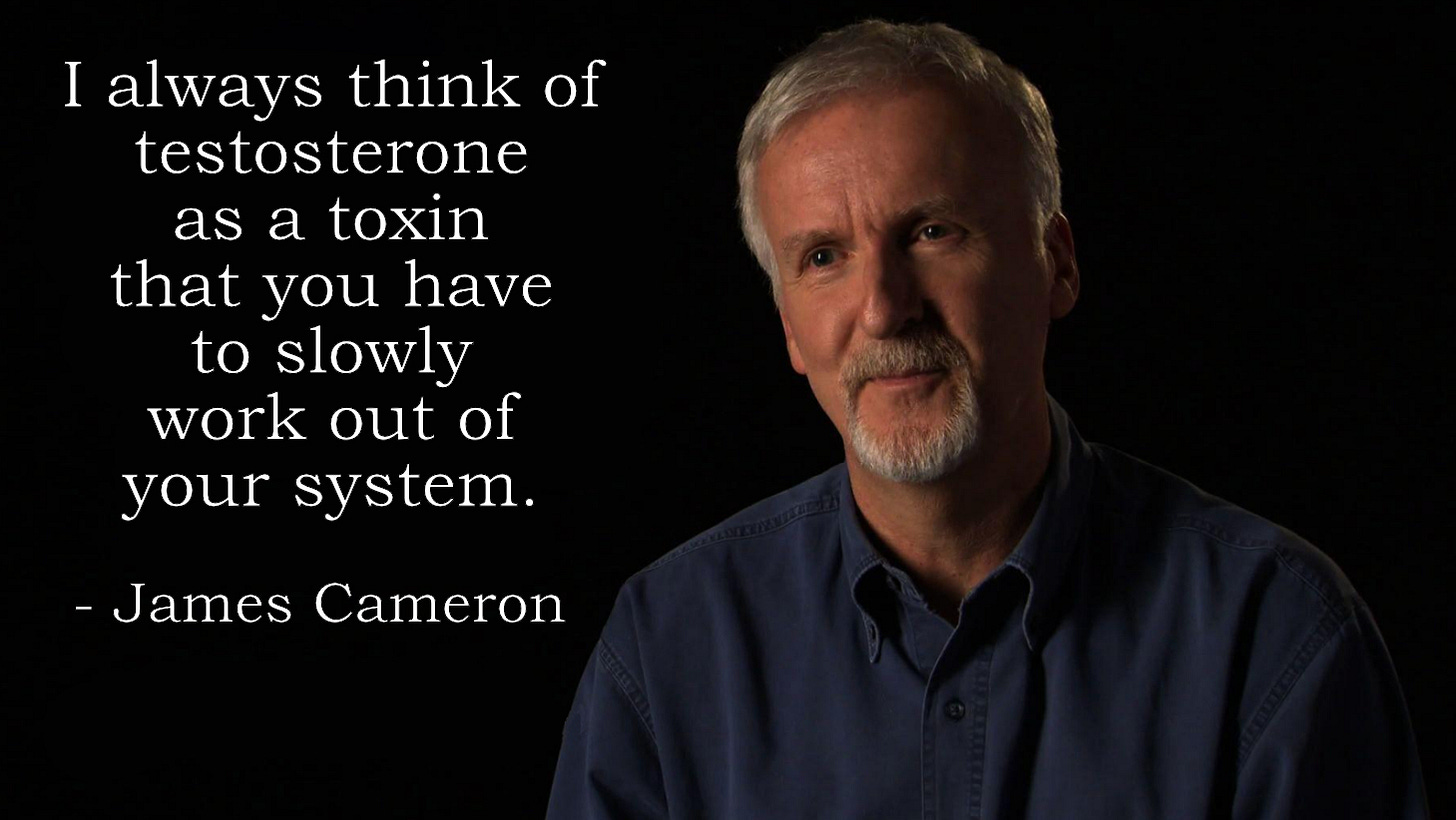
All the male characters who are undisputedly strong, powerful, competent and skilled are the villains. But all the female characters (with the one exception of Claudia) who are undisputedly strong, powerful, competent and skilled are the heroines.
The women in TDP are powerful, dangerous even, yet good.
Strength, power, competence and skill corrupt men in TDP and cause pain for the world, while the same in women bring forth healing and reconciliation. One sex is presented as undeserving of strength and power, while the other is depicted as inherently worthy.
This is why all the male heroes are the opposite of strong etc. because to be a “good” man you have to be soft, funny and harmless (low testosterone) – just like Soren, Ezran and Callum.
In Ehasz’s worldview, “good” men must know their place and that is either as ineffectual persons or as subordinates to their moral superiors aka women.
Possible Counterarguments
Some might object to my assessments of TDP.
“What about Ezran? He’s the literal king of Katolis!” some may cry in response to the observation that all the heroes are portrayed as the opposite of strong, competent, powerful and skilled.
But as discussed earlier, Ezran isn’t strong, competent, powerful or skilled. The capital of Katolis was destroyed while he was away in a foreign land watching his aunt kiss an elf at a fake wedding. As king of Katolis, he doesn’t do anything worthy of mention since he neglects his duties and runs off all the time.
He doesn’t even look strong, competent, powerful or skilled, even while wearing his crown.
“But what about Callum?” some others may ask. “He is the first human to learn elemental magic and is a proficient mage. Surely he is…?”
No.

Leaving aside the fact that Callum’s response to Rayla’s desertion isn’t the response we would expect from a young man described as strong, competent, powerful and skilled, Callum is never allowed to shine in the series. Ehasz kneecaps him like Soren but with a smaller and quieter hammer.
The series tries to tell us that dark magic is bad and immoral (although, as per my previous article, the show isn’t very persuasive) and lets the audience know that Callum is a good person because he shuns dark magics and only practises elemental magics.
While watching the series, I predicted that Callum would be given a chance to shine with his magic, despite watching Ehasz shaft Soren and Corvus in real time.
I predicted a showdown between Callum and Claudia who is a dark mage and villainess. This would see the clash of two different philosophies, two different moralities, two different methods; a battle between light and dark – good and evil.
I expected the fight would be epic and brutal but that Callum would win and vindicate the moral decision of studying elemental magic and show the world that dark magic was inferior to light magic.
Well, there is a showdown between Callum and Claudia, but it is boring rather than epic.
And more, importantly, Callum loses.
And he hard loses. If another character (an elf called Runaan who killed Callum’s step-father) hadn’t been there, Callum would have been ruthlessly killed by Claudia. Runaan saves Callum but Claudia escapes unscathed
At this point in the series, I, already unconvinced that dark magic was as bad as the writers wanted me to believe, saw this not only as a personal defeat for Callum but also a complete repudiation of the idea that humans should forego dark magic in favour of elemental magic.
The archmage prodigy, the first human to learn how to wield elemental magic, cannot even defeat a single dark magic user in a fair fight.
Whether the writers intended for this to reflect poorly on elemental magic is irrelevant though, because the reason Callum lost is Ehasz didn’t want a male (particularly a young, straight, white male) defeating a young, disabled, bisexual woman.
Ehasz hates women
Ehasz doesn’t like the male characters in his show which strongly indicates he doesn’t like men generally but one would expect the opposite to be true considering his obvious ideological alignment.
But, judging by TDP, I don’t believe Ehasz likes women. Or rather, he doesn’t like women being women, he prefers women to be like men.
Consider the main heroine in the series: Rayla.
Rayla is not feminine. Rayla is not girly or womanly and she is definitely not like pepper and spice or anything nice. She is anti-feminine.
Yes, her physical body is female but her personality and spirit lack grace, gentleness and any other positive womanly qualities.
Rayla is masculine and, ironically, one could argue that she is toxically masculine.
Now, I do not use the phrase “toxic masculinity” or the adverb “toxically” to modify “masculine” out of principle because it is terminology used by my political, religious and philosophical opponents but I’ll allow myself some liberties here.
This article, which has been reviewed by an American Doctor of Medicine (so it must be true! Trust the experts guys!), says there are three core beliefs inherent to toxic masculinity.
"Toughness": Men should be physically strong, emotionally callous, and behaviourally aggressive.
Anti-femininity: Men should reject traditionally feminine behaviours such as showing emotion and accepting help.
Power: Men should work toward obtaining power and status (social and financial) and thus gain the respect of others.
Rayla fits the first of these two criteria to a tee.
She acts tough, emotionally callous and aggressive.
She rejects feminine virtues and behaviours, and she is reluctant to accept help from other people, even from her boyfriend Callum.
Ehasz’s idea of what a strong woman looks like is just toxic masculinity. Andrew Tate would be proud!
Moreover, Rayla doesn’t have any redeeming qualities of note. Soren may be a clown, Ezran may be a perpetual child and Callum may be weak but I can honestly say that they don’t mistreat those who are closest to them and that they try to do the right thing to the best of their capabilities.
Rayla is a rude, berating, self-righteous and selfish elf who leaves her boyfriend on the morning of his birthday for two years and never apologizes. Her actions in pursuit of the good are motivated by selfishness more often than not.
And she is the main female character in the series.
Ehasz hates women who don’t share his views, just like all other feminists of his ilk. In his ideal world, women would be gross caricatures of unhealthy masculinity rather than motherly matrons or kind maidens.
Unapologetic, soft and graceful femininity appears to be anathema to Aaron Ehasz.
The Dragon Prince is Propaganda
In this essay, I have demonstrated that the main characters in The Dragon Prince are bad role models for children and they’re this way because Ehasz is a male feminist.
Long-time followers may notice that this essay is more aggressive and charged than my usual work, since as of late, I have opted to be calm, measured, contemplative and more gracious in my written essays and videos.
The reason for my harsh words and aggressive stance is because Aaron Ehasz does not deserve these courtesies.
Ehasz created The Dragon Prince and filled it with the worst role models ever seen in modern family-friendly entertainment. He is a children’s writer who shunned all his moral and creative duties so he could grandstand and virtue signal his support for feminist and progressive ideological tenets instead.
The man is guilty of producing bile which will only hurt his young and impressionable viewers. This is not something I can tolerate or forgive.
While writing this essay on The Dragon Prince, I asked myself the big question: what was the purpose behind creating the series? What was the real meaning of The Dragon Prince?
The Dragon Prince decided to tackle some big issues which were barely appropriate for a family-friendly cartoon because the writing had to simplify and sanitize said topics so children would have a chance of grasping ideas about them.
Truth be told, the subject matter explored by The Dragon Prince is too multifaceted and complex to be done any justice in a children’s show and would have been better explored in a series aimed at adults where the issues would not require simplification for the primary audience to understand them.
So why would Ehasz choose to explore matters such as cycles of violence, ethnic prejudice, power politics, geopolitics, race wars, unhealthy romantic relationships etc. in a family-friendly series where these would need to be simplified and sanitized to be comprehended by children? He would have known that he could not do these subjects any justice in this medium.
The answer is simple – Ehasz had no intention of actually exploring these subjects in his story…
His intention was to propagandize children.
So far I have referred to Ehasz as a children’s writer, however, he is not a writer anymore, he is a rank propagandist but he is also a bad and cowardly one.
Skilled propagandists are not scared of adult audiences because the idea of manipulating larger prey excites them but Ehasz knows his skills at manipulation are too weak for grown men and women. Hence, he chose to go after children who, while not stupid, are impressionable and more susceptible to propagandistic media.
One day, I’ll write a post on this substack publication delineating the differences between art and propaganda but one of the undeniable hallmarks is the inability to brook any difference of opinion.
The Dragon Prince is marked by this.
There is a female wood elf in the series who suffers from gender dysphoria and calls herself Terry. Later she tells one of the principle antagonists that she identifies as a boy and this is basically his response:
Similarly, Amaya and Janai’s lesbian relationship is never questioned or criticized even though Janai is the queen of the sunfire elves and the question of future succession to the throne is made more complicated by her “marriage” to a woman.
Janai and Amaya also want to foster and create a joint society of sunfire elves and humans and this idea faces criticism from Janai’s brother Karim. The writers apparently got scared of Karim because his arguments came across as too reasonable and wise so they turned him into a scheming, backstabbing and power-hungry villain to discredit the concerns by association.
In the world of The Dragon Prince, questioning homosexuality and transgenderism is literally unthinkable and only persons with ulterior motives point out the conflict that happens in multicultural and multiracial societies.
And, of course, because all the humans (regardless of their race) are coded as white people and all the elves are coded as people of colour, the series always ultimately sides with the elves and dragons when push comes to shove, even as it feigns a balanced and neutral view.

To understand that The Dragon Prince is progressive, feminist propaganda is to understand why the main characters - Callum and Rayla, Ezran, Soren and Corvus - are such terrible role models.
The aim of creating healthy role models would have interfered with the aim of creating feminist propaganda; the two goals were mutually exclusive.
If Rayla were to be nicer, kinder and more feminine, she wouldn’t be a strong, independent, feminist girl boss. And if she were to apologize to Callum and beg for forgiveness, she’d be showing weakness and that would make her less of a girl boss.
If Callum were to be masculine, strong, competent, powerful and skilled, he would not allow Rayla to wear the trousers in the relationship and he wouldn’t be the submissive, weak male partner that feminist women claim to desire.
If Ezran were to be a strong and brave king who wielded power to benefit his people and protect those under his care, he would be too reminiscent of the good king archetype which is a potent symbol of patriarchy. Hence, he was softened to be more palatable to a feminist imagining of a medieval fantasy world.
And if Soren and Corvus were allowed to be strong, competent, powerful and skilled men, they would threaten to dominate the show’s plot and definitely become big brothers to Callum and Ezran. They could constitute a kind of fraternal order or brotherhood that would upstage the women in the show. So Soren had to be turned into a ludicrous buffoon and Corvus had to become his babysitter.
All the characters had to bend to the feminist vision one way or another, no matter the moral cost. The message, the signal, the propaganda had to be everything.
Even if it meant harming the children who watch the show.
Conclusion
After watching The Dragon Prince, it is incredible to dwell upon how it shares the same head writer as Avatar: The Last Airbender.
There are feminist/egalitarian elements in ATLA. Most notably, there is an episode where Katara fights the master waterbender of the patriarchal North Water Tribe to prove she should be trained how to fight like the male waterbenders. And, of course, there are plenty of capable female fighters and benders in ATLA – Toph, Suki, Ty Lee, Mai and Azula.
However, the mere presence of ideology, philosophy, religion, politics etc. in a story doesn’t make it propaganda even if you don’t agree with or like what the writer is saying. The difference is found in the intent and the construction.
Yet funnily enough, ATLA is decidedly patriarchal when viewed as a whole. The egalitarian undertones are superseded by grand notes which reflect a natural, patriarchal understanding of the real world.
The last episode sees the city of Ba Sing Se liberated by a small group of arguably the most powerful men on the planet. It sees Aang defeat the king of the Fire Nation in a one-on-one duel and Zuko rise to be ruler of the Fire Nation.
Towards the end of the episode, Zuko and Aang are preparing to address a crowd and Zuko tells Aang that they will rebuild the world together. The other characters are not present during this conversation.
Zuko and Aang are depicted as the main leaders of a world which they are about to reshape according to their will. Their positions are noteworthy; Zuko is literally the king of the most powerful nation on the planet and Aang is the almighty avatar whose voice holds massive sway. They are both rulers who don’t have any equals either male or female. This new order is patriarchal and all the female characters are happy with it and helped to bring it into existence.
Further, both Zuko and Aang can be described as strong, competent, powerful and skilled young men. They can be described as masculine.
It is notable that both characters embarked on a masculine journey and became stronger, more competent, more powerful and more skilled at the end of it.
Neither character was complete at the beginning of the story nor did they have the luxury of remaining static, they had to change and grow to become the powerful young men you see in the last episode.
This is why Zuko and Aang are good role models for young boys.
Even Sokka, who is the main comic relief in ATLA and is beaten by his future girlfriend in a wrestling match at the beginning of the show, goes on a masculine journey of growth and self-development. He reaches a level of martial prowess in the third season where it is hard to imagine his girlfriend Suki ever defeating him in a fair fight. He may have been a joke at the start but he becomes a respectable young man at the end of the journey.
The female characters in the series are also good role models for young girls (except for Azula who is a villainess). Katara, Suki, Ty Lee, Mai and, even the tomboy Toph, have feminine qualities and are recognizably young women. They are not insufferable feminist girl bosses.
Katara, despite her subplot with the master waterbender in season one, is arguably the most feminine of all the female characters and is strong in all of the Domestic Virtues.
And notably, all the female characters on the good side act in a supportive role – they all support Aang in his masculine quest to take down Fire Lord Ozai. They are basically Supportive Action Heroines (a term I coined in this video essay).
Viewing ATLA from this angle, one has to assume that Ehasz was either restrained by the showrunners in his capacity as head writer on ATLA or that he was only a moderate feminist at the time of the series’ run. I imagine that modern day Ehasz would be embarrassed if someone pointed out to him what I have just outlined.
But in the end, it doesn’t matter whether Ehasz was always a devious ideologue or if this is just a recent development. The fact remains that The Dragon Prince is progressive, feminist propaganda and all its characters are terrible influences on children.
Ehasz spat and stamped on his duty to provide good and healthy role models in his show and intentionally presented wicked and weak characters instead. His goal was propaganda, not the Good, the True and the Beautiful.
The Dragon Prince will cause harm to all children who watch it.
It is, without any exaggeration, a subversive propaganda piece and a moral failure.
And Ehasz is a slithering, subversive propagandist.






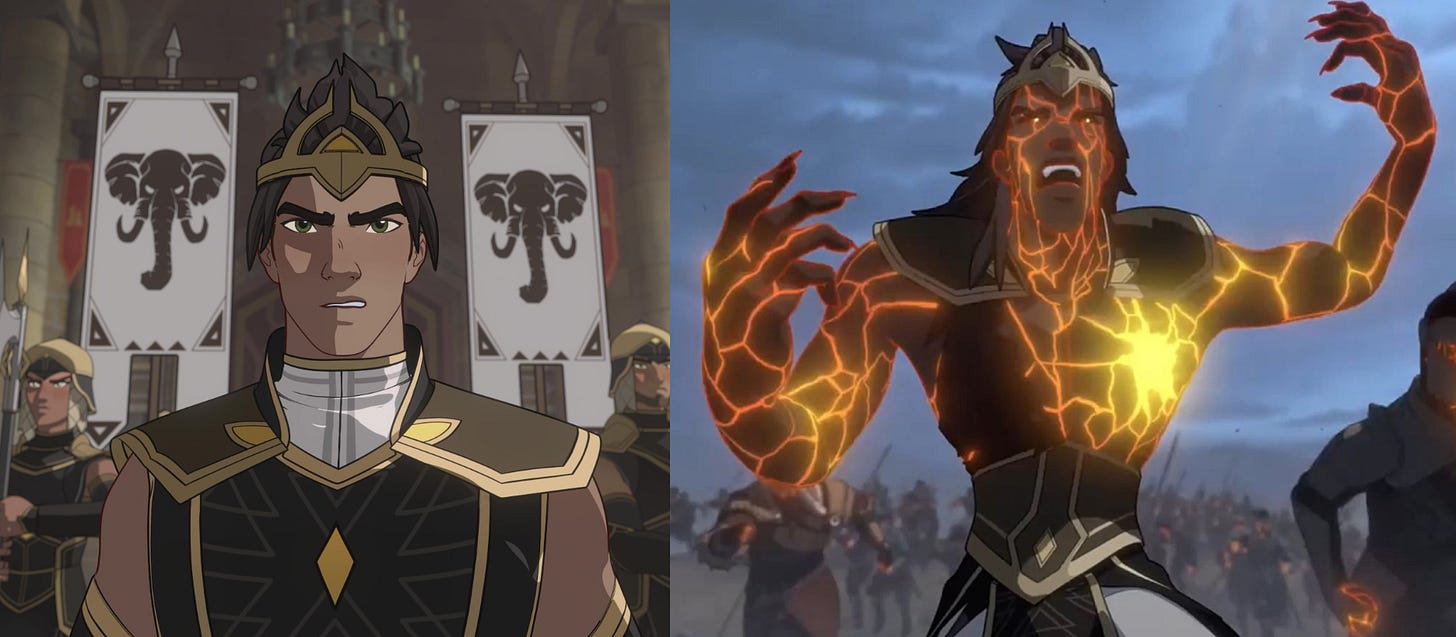
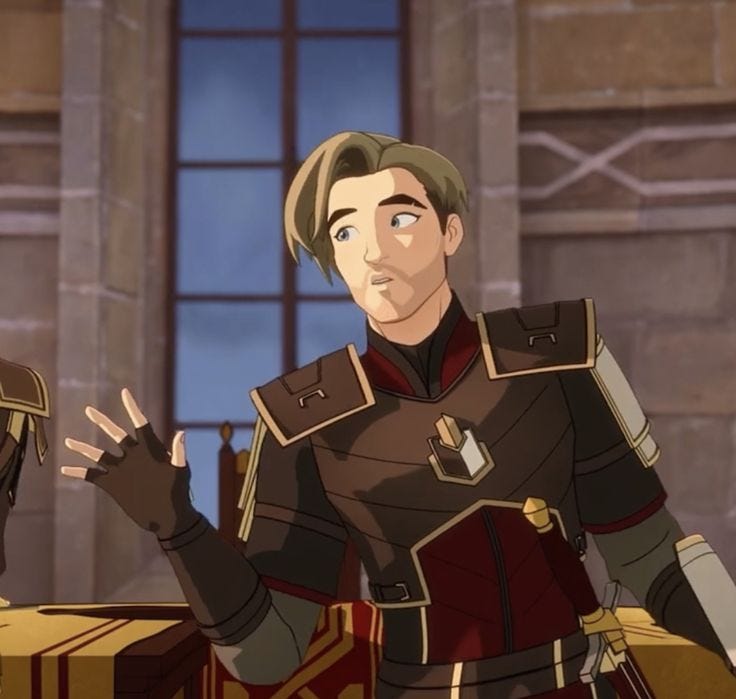
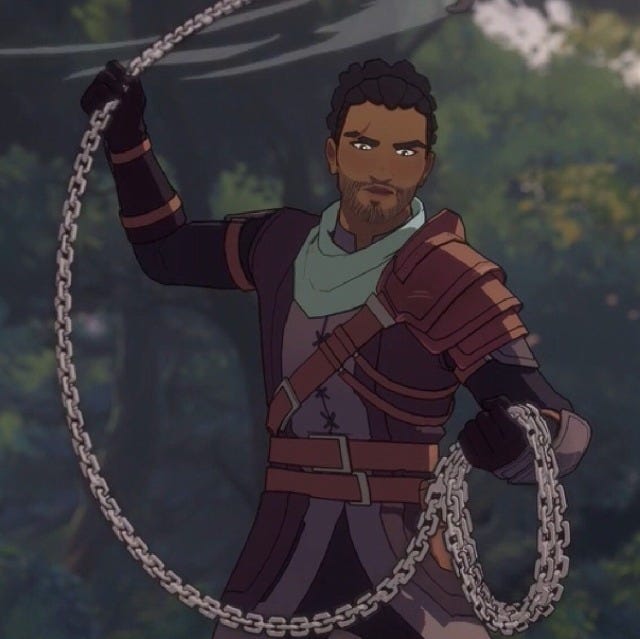

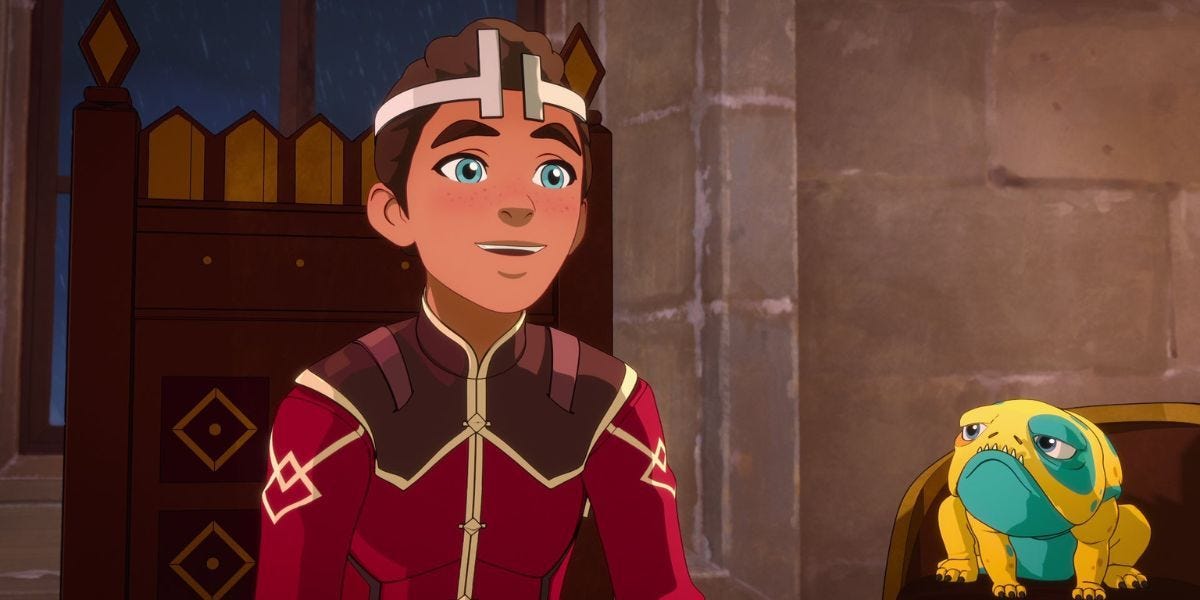


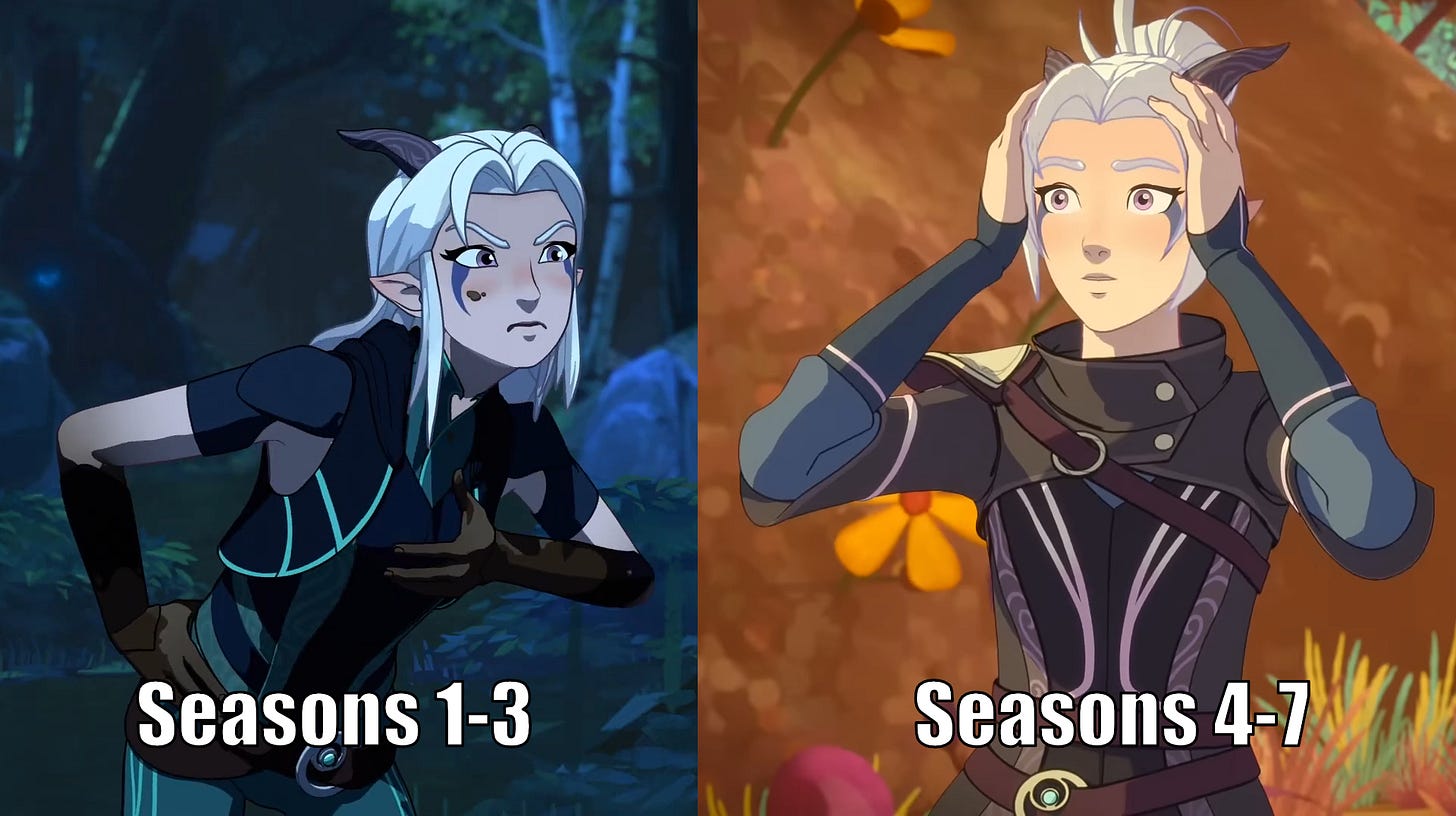

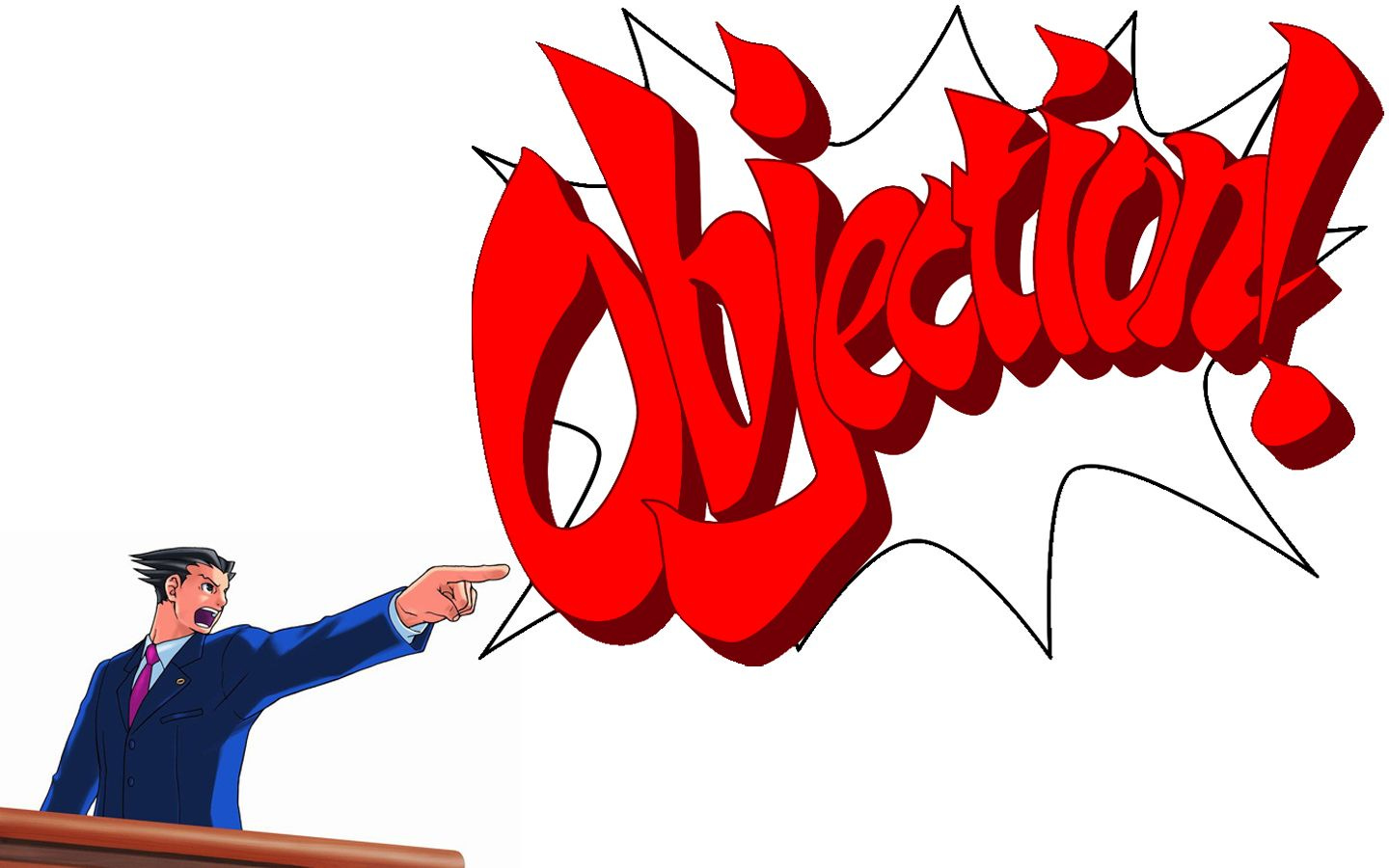

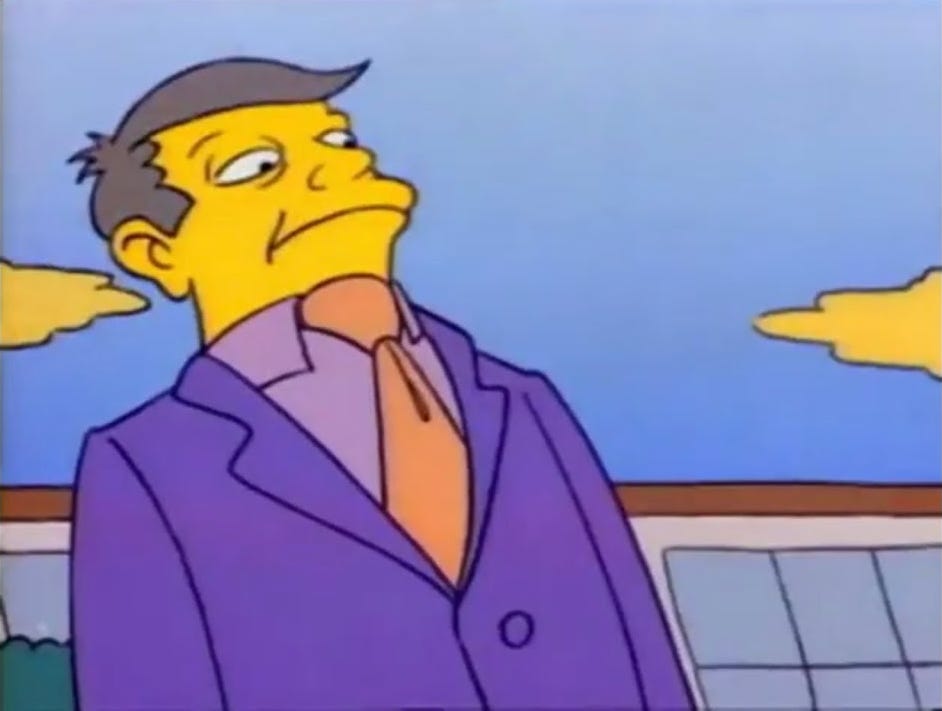
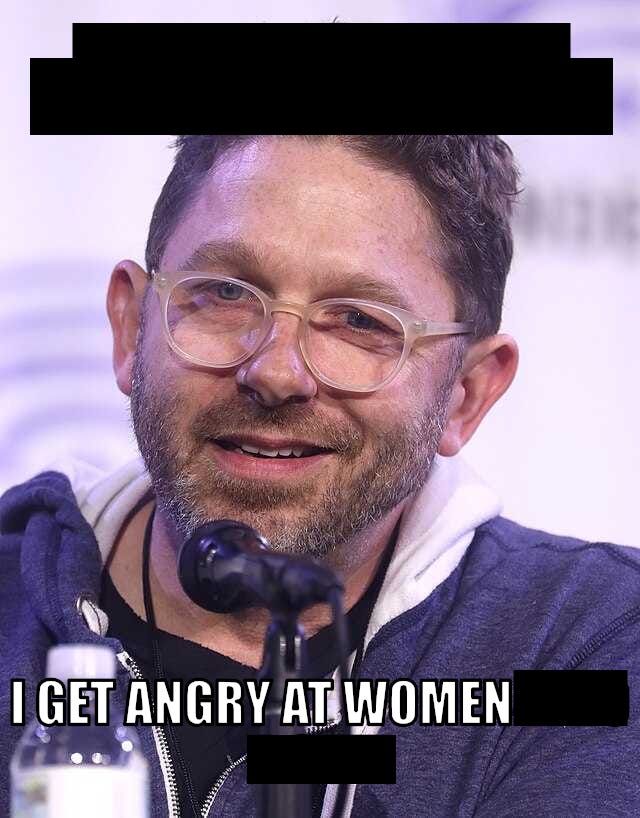
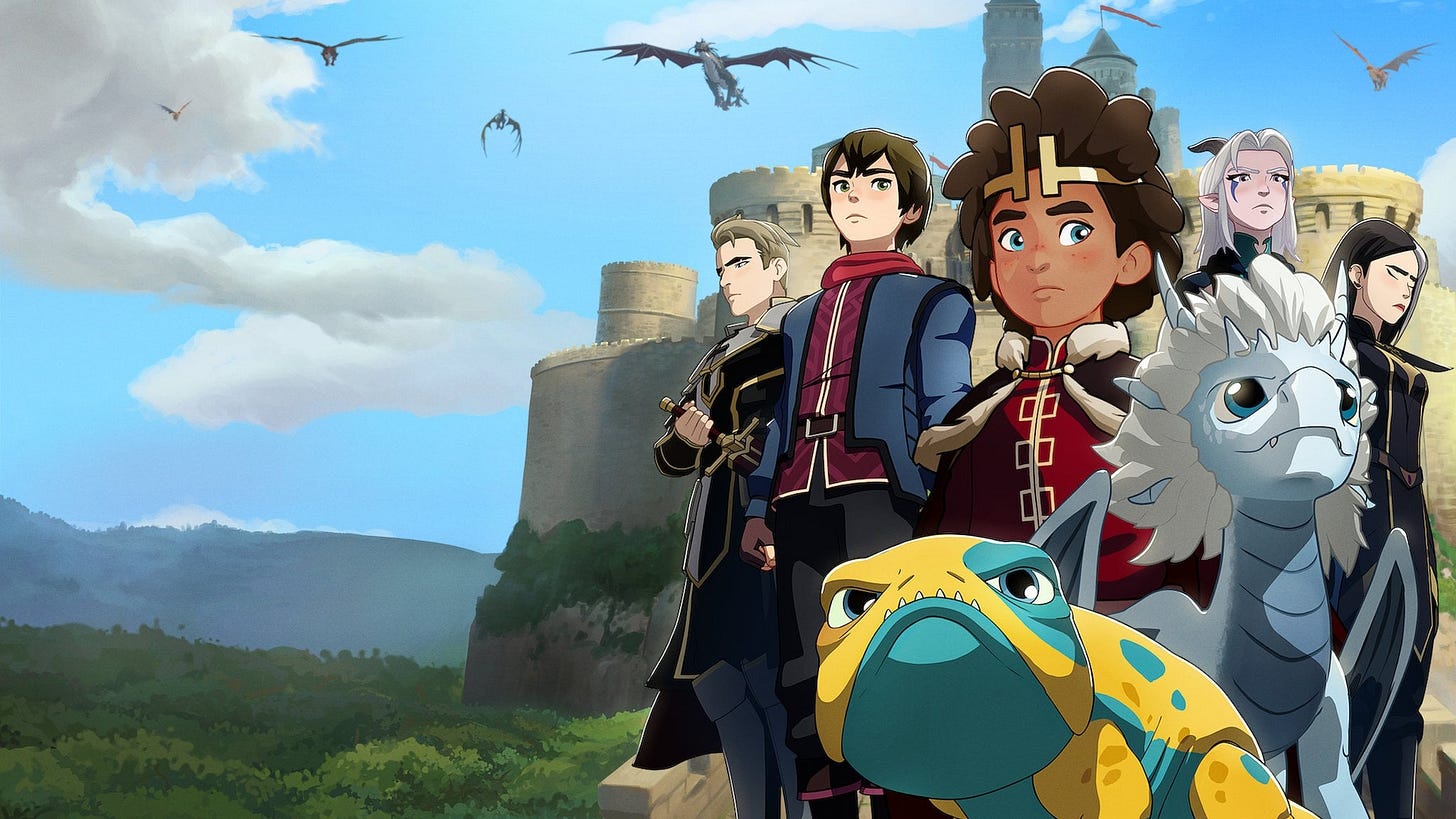




"Depicting a healthy romance beyond the point of initial attraction would be a great moral service for both children and adults in our broken society. Of course, it would have to be done well and there are many traps which could ensnare even a good writer."
I am getting gradually more familiar with your catalogue and you may have written about this already, but do you have a vision for what that would look like, and what traps to avoid? I want to write that kind of thing, I love media where a married couple is a main character (the Incredibles and some aspects of Shrek come to mind), and they support and hone each other, die to each other for each other, and are more together than they are apart. You're the first person I have seen outside of my friend group really discussing this, and I am pretty hungry generally for more of this topic.
If you want to stab out your eyeballs, go and see what the fandom posts on Tumblr. If an elf has a chest scar, that means they are obviously trans!
The show attracts the worst kind of people, and I feel as if that is on purpose.